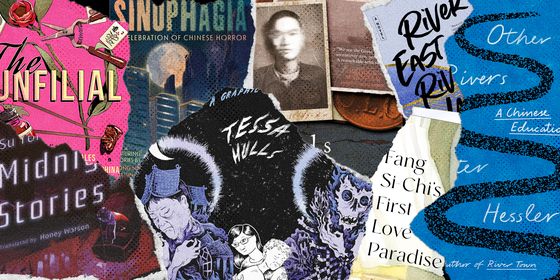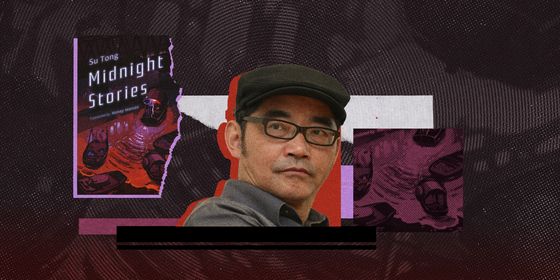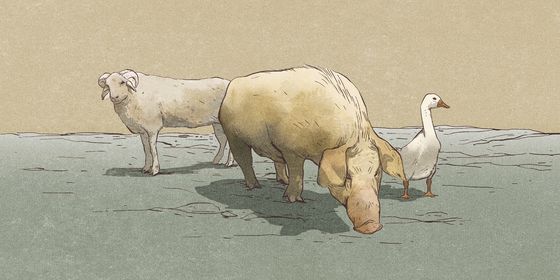The late writer Sanmao’s memoir ‘Stories of the Sahara’ is a humanistic whirlwind through a harsh and poignant landscape
“The Sahara Desert had been my dream lover for so long,” Sanmao wrote upon her arrival in the Spanish territory of the Western Sahara in 1973, a moment she’d anticipated ever since seeing pictures in an issue of National Geographic as a child.
Setting her heart on making a home in this landscape of extremes, the 30-year-old writer would memorialize the next three years of her life in Stories of the Sahara, a collection of writings that begins like a whimsical travel memoir and accelerates into a lyrical and bittersweet eulogy to the desert’s fragile peace.
Officially translated and published in English for the first time in 2019, nearly three decades after its author hanged herself by her silk stockings in a Taipei hospital in 1991, Stories of the Sahara no longer has the political relevance or the romantic exoticism that made it a bestseller in Taiwan and the Chinese mainland in the 1970s and 80s. Yet the timelessness that Sanmao loved about the desert has also proven itself in her stories—not for their geography, but for Sanmao’s enduring humanistic passion.
Born in 1943 to a middle-class family in Chongqing, Sanmao, then Chen Maoping, moved to Taiwan at the age of six. Unable to fit in at school, and at times harshly ridiculed, she turned toward art and literature, devouring classics such as Dream of the Red Chamber, Don Quixote, and The Count of Monte Cristo.
Adopting the name “Echo” after a beloved painting tutor, she studied philosophy in Taipei and Madrid, and received a German teaching license. Restless once more, she convinced her Spanish lover Jose Maria Queroy Ruiz to move with her to the Western Sahara. It was there that she wrote many of her most celebrated stories, adopting the pen name Sanmao, and chronicling the Western Sahara as it sank into instability at the end of colonial rule.
“Jose has always thought that I’m a genius and an idiot at the same time,” jokes Sanmao in “A Ladder,” one of the stories in the book. Never having assimilated society’s prevailing ideals, Sanmao was always, stubbornly, Sanmao. As early as primary school, a teacher had chastised the young girl for her essay “My Aspirations,” in which she wrote, “When I grow up, I hope to be a rag-and-bone woman, because in this job I could breathe the fresh air and I could also roam around the streets and lanes and have fun…Even more important, I could pick up lots of useful things that other people had thrown away thinking they were rubbish.”
Years later, the same recalcitrant sense of beauty and worth infuses Sanmao’s daily observations and decisions in the desert. In “The Marriage Chronicles,” Sanmao writes of unwrapping Jose’s gift on their wedding day: “Wow! Two eye sockets of a skull stared up at me.” It was a camel skull with “white bones neatly assembled, with a huge row of menacing teeth” that her husband had picked up from the sand. Her conclusion: “It was genuinely the best wedding gift possible.”
In the absence of flowers, Sanmao grabs a sprig of coriander from the kitchen and pins it to her hat, and the couple sets off, walking across the dunes toward the city hall without fanfare or procession. Throughout the volume, Sanmao finds beauty in scattered pieces of driftwood (“modernist sculptures”), her prized bonsai trees (“twenty-five leaves in all”), and the moonlit desert (“like those dreamlike and mysterious paintings by the Surrealists”).
Written in a confessional tone, as if to a close friend, Sanmao’s freewheeling desert sketches were originally serialized in Taiwan’s United Daily News. They were warmly received by a Chinese audience emerging from decades of political turmoil, but literary scholars note that unlike female contemporaries like Qiong Yao, who wrote popular romantic novellas of ornate high society, Sanmao offered an alternative path to fulfillment—the pursuit of radical freedom and equal romantic partnership.
While Stories of the Sahara begins with Sanmao’s lighthearted tales of “striv[ing] to dispel the misery of these long, leisurely years with artfulness and pleasure,” her essays diverge from simple lifestyle writing when she moves into the cemetery district and becomes entangled in the lives of local Sahrawi. “Thanks to these neighbors…No longer did I know the taste of solitude,” Sanmao concludes. With the spirit of a novelist, rather than an anthropologist, Sanmao refracts complex issues like child marriage, slavery, and colonialism through an unfailingly personal lens.
In “Crying Camels,” the romantic Sanmao becomes bitterly realist: “It’s one thing to fight as a guerrilla. It’s another to establish a country.” The desert in Sanmao’s time was divided between scorching days and chilling nights as between the local Sahrawi people and Spanish colonial presence. When the Spanish officially announce their departure, the Sahrawi celebrate their hopes of self-determination.
However, the king of Morocco declares his intention to annex the Western Sahara, marching toward El Aaiun with an army of 2 million. Watching her friends’ husbands, sworn Sahrawi guerillas, rush to their deaths to defend a dream of independence, Sanmao quotes the classic Chinese novel Dream of the Red Chamber: “The disillusioned to their convents fly/ The still deluded miserably die./ Like birds who, having fed, to the woods repair/ They leave the landscape desolate and bare.”
On a moonlit evening in “Sergeant Salva,” Sanmao and Jose spot a group of young Sahraw is spitting and stepping on the body of a drunkenly passed out Spanish soldier. Sanmao and Jose extricate the man and deliver him back to the barracks. When Sanmao encounters the Spanish soldier again at the grocery store, he angrily declares that “To friends of the Sahrawi, I have no name.”
One day, an old Sahrawi man tells Sanmao that, 16 years prior, an entire Spanish desert corps unit was slaughtered in their sleep, save for a single man who had passed out in the sands, drunk. Watching a military cemetery excavated upon Spain’s retreat from the Sahara, Sanmao notices the sergeant sitting in the shade pulling “a corpse that had not yet rotted into an embrace like a lover.”
In Sanmao’s stories, tenderness is not reserved for any single group; rather, individual characters are illuminated with heartbreaking details and constant twists of depth. The few occasions where Sanmao can’t help but condemn are just as telling: watching the taking of a young Sahrawi bride’s virginity turned into a cruel show; meeting a Spanish man who claims that they should slaughter the Sahrawi if they dare to oppose them; and upon discovering that the young boy who served her barbecued camel at a wealthy home is a slave. Sanmao bristles not at the violation of a single group, but of some sense of fundamental humanity.
As Sanmao’s emotional commitments thickened, so did the tenor of her writing, tackling enduring questions of humanity and crystallizing into the stuff of literature. “I’d expected a scorching sun, but instead found a swathe of poetic desolation,” wrote Sanmao of the Sahara in her first essays. Amid the growing chaos, Sanmao navigates a compassionate path through rifts, hostilities and heartache. At the end of her time there, watching the situation devolve into bloodshed, Sanmao maintained: “There is no place in the world like the Sahara. This land demonstrates its majesty and tenderness only to those who love it.”
In the end, Sanmao is celebrated not for what she saw, but how she saw it. With bewildering passion, and a belief in the beauty of differences, Sanmao’s broad compassion drenched everything she wrote. Even as Sanmao left her beloved undulating dunes behind, Stories from the Sahara is as much a love letter to the landscape and the people there as it remains a study of a vivid, unblinking life lived at a close distance.
More recommended reads:
The Message
The latest translation of spy-novel master Mai Jia, this book is set in 1941 amid the Japanese invasion of China. Suspected of being undercover communist agents leaking classified information, five code-breaking officers of the collaborationist government are detained in an isolated mansion, where they are subjected to psychological manipulation and physical torture. But a final secret message will be sent out—one way or another. Originally published in 2007, this novel has already been adapted into two TV series and a movie on the Chinese mainland.
Of Ants and Dinosaurs
Sixty-five million years ago, on an ordinary day in the Cretaceous Period, ants and dinosaurs accidentally collaborate. Forming an interdependent alliance, the two intelligent species create civilizations and evolve together. But as the ants become more united, the dinosaurs fall into disharmony; and when a crisis arises that threatens to destroy the Earth they share, the ants take actions that ultimately lead to unthinkable consequences. Liu Cixin depicts a strange yet familiar world in this alternate historical fable, and, as in all of his works, paints a grand picture of where our own history might be heading.
Death Notice II: Fate
The second installment of the phenomenal Death Notice crime-thriller trilogy by Zhou Haohui, China’s top detective-novel writer, Fate features the serial killer Eumenides, who serves his victims with “death notices” that detail the dates of their murder. Despite high security levels maintained by the police, Eumenides has never failed to commit a crime. Can Sergeant Zheng Haoming of the Chengdu Criminal Police solve the case in time? Or is it already too late? – LIU JUE (刘珏)
Desert Echo is a story from our issue, “Alpine Ambitions.” To read the entire issue, become a subscriber and receive the full magazine.












